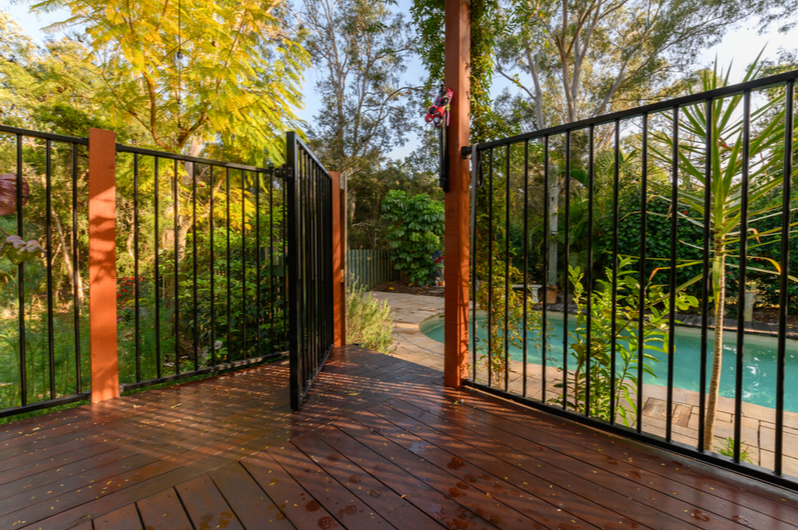Adding a Privacy Fence to Your Home
Your new home may not automatically come with a fence; this article proposes different materials and options for privacy fences and what to consider before deciding on one.
So, you have decided to build a fence around your home or are in the planning phases. There is a lot to know up front. Maybe you want to improve your home’s curb appeal, improve security, or increase the property’s value, but undoubtedly, a good fence also offers you and your family better privacy. A good fence stops passers-by from peeking through your ground floor windows or being bothered by neighbors.
A privacy fence is therefore a great addition to your home, it determines the boundaries of your property and keeps wild animals like raccoons or deer from wandering into your garden. Numerous options are available, so how can you decide on the best one for you?
Important considerations
Before any project, there are some important things to consider before starting to measure and choosing a desired style. Planning with these in mind saves you from expensive mistakes:
- Local regulations
Before starting any work, contact your city hall and find out if you need a permit. A fence built in the wrong place or above the permitted height is likely to be discovered and torn down – you may even have to pay a fine.
- Height
You have now checked with city hall and you know how high your fence , but how high do you need it to be? Although 6 ft. is the standard height for most prefabricated fences, you save on materials if you only need it to go up to 4 feet. Remember the higher the fence, the more vulnerable it is to strong winds.
- Access
Easy access is a must for any property. Apart from the obvious front entrance, consider your visitors and how you are going to use your home and yard: a wider pedestrian entrance for baby buggies or wheelchairs, a secondary gate for access to the back of your property, space to move the lawnmower or wheelbarrow around.
- Neighbors
Although you are building on your property, it is always a good idea to inform your neighbors of your plan, especially if there was no fence before or you are increasing its height.
Finding the one
Privacy fences easily adapt to match with the style of your neighborhood and your home, employing the use of various materials, stains, and vegetation.
- Wood
Wood privacy fences are immensely popular. Relatively inexpensive and sturdy, wooden fences last for years if properly looked after.
If you are unsure about the style you prefer, wooden panels are a magnificent initial option, as wood is the easiest to modify: wood fences take paint nicely, can be sawn to a shorter height, and have accessories added by nailing some decorations on them.
- Vegetation
Embrace the beauty of nature, let the trees and shrubs do the work for you!
A natural fence takes longer to grow than building one, but if you are in a rush, mature trees can be purchased and delivered to your door from a tree nursery.
Apart from feeling less constrained than a traditional fence, trees are not subject to the same height restrictions as fences, so if you want a taller screen than what the regulations allow, a line of trees might rectify the solution.
- Metal
Metal fences are hugely popular, as these fences add a modern look to your property. Although wrought iron is quite traditional, aluminum and steel fences are easy to find. The cost of a metal fence is higher than other materials, but it is a very durable option requiring little maintenance.
- Vinyl
Vinyl fences are hugely popular, and are inexpensive, almost maintenance-free and so light an inexperienced homeowner can install them without help. Vinyl fences are available in multiple colors and styles. However, vinyl is not as sturdy as other materials, as it can get damaged by extreme cold and heat.
- Stone
Ensured to give your house an impressive look, a stone fence is extremely durable. It requires more space than other materials and is rather expensive, although gabion walls – a metal cage filled with stones – is more affordable and contemporary.
Gates
Before the beginning of the project, consider access to your property. It is the most important part of your fencing project.
Your access gate or entrance can match your fence or stand out, but apart from the style, many other factors come into consideration:
-
Mechanical or manual?
-
Security features
-
Opening: swing, rolling or cantilever?
Take some time to measure the space you have and think of how you are going to use the gate, if you are going to drive in and out, how are you going to let your visitors in, if there is power where you want to install the gate.
Popular Brands
Now once you have considered your requirements and preferences, have a look at some popular brands and suppliers below. These popular brands are a great source of inspiration and information; for expert advice, a local trader can help you better understand your options and your city’s regulations regarding fencing.
